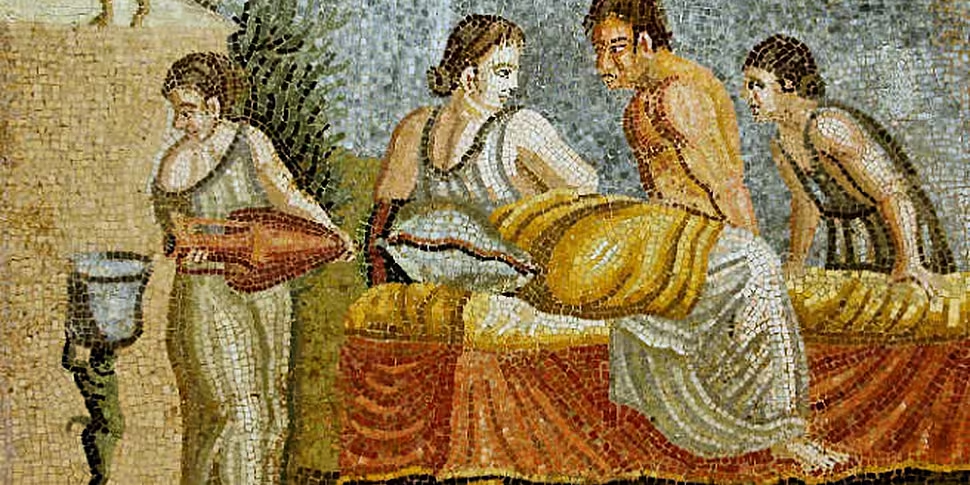Ancient Rome is often depicted as a haven of hedonist pleasures. On-screen representations of the great empire tend to focus on the gladiatorial violence and the debauchery of the bedroom. At the same time history books emphasise the heights reached by Roman culture, politics, and diplomacy. So was Rome the seat of culture and civilisation, a den of sin, or a mix of both?
In his latest book historian Paul Chrystal looks beyond the flashy popular representations and stuffy academic writings to bring to life the realities of sex and sexuality in Ancient Rome. Drawing on evidence from written sources, preserved graffiti, and visual representations In Bed with the Romans is a window into the bedrooms of the ordinary citizens as well as the great emperors.
Professor Patrick Geoghegan, host of Talking History, talked with Paul about some of the more interesting aspects of sex life in Ancient Rome from same sex marriage, to female gladiators, and claims of Julius Caesar cross dressing.
While sexual liberalism regarding homosexuality is usually associated with the Ancient Greeks, especially the city state of Athens, the citizens of Rome were similarly accepting of same sex relations, at least among men. While there were still social norms associated with homosexual relationships in Rome men weren’t precluded from marrying other men.
While these marriages weren’t commonplace they did occur and Paul points out that even the emperors Nero and Elagabalus seem to have married men. How far that same tolerance extended toward sexual relations between women, however, isn’t clear. Few references to lesbianism exist and many that do admonish the apparent perversion of gender roles.
This double standard isn’t surprising when you consider the patriarchal nature of Roman society. In all of Rome’s powerful iterations, from kingdom through republic and on to empire, men held the seat of power at home and in public. The major political and military offices, and most powerful religious roles, were reserved for men.
In a world so dominated by men access to their bedrooms afforded the ambitious avenues to power; so homosexuality between men might have been viewed more favourably than between women.
The same tolerance seems to have extended toward cross-dressing and gender identity, even among the highest profile and most powerful Romans. Paul notes how the great Julius Caesar “dressed up as a woman and he indulged in, I would imagine, interesting sex with the king of Bithynia. That moved him along politically; it was good for his CV”.
It wasn’t all work and politics in Rome though and a good deal of In Bed with the Romans is dedicated to the sexual health and eroticism of Rome’s entertainment. While they didn’t enjoy the same freedoms and powers as men, women were allowed compete as gladiators.
This might not have been a great blow for gender equality though.
Fights between male gladiators were celebrations of physical prowess, as well as gory entertainment, and were the exclusive realm of men. Paul argues that “there were many female gladiators and they were there for the delectation for the largely male audience...there’s certainly an erotic voyeurism involved and that’s what the crowd liked.”
Though many of the details have been lost to time Paul does a great job of bring sexuality and sex life in Ancient Rome to life. Far from a simple index of sordid depravities, In Bed with the Romans explores the intricacies of this lost world; from sexual health and medicine to the social standing of prostitutes and the casual attitudes toward behaviour some might find morally dubious today.
Patrick also talks with:
- Owen McGee, author of the new biography of the founder of Sinn Fein, Arthur Griffith
- John Flood who edited The Works of Walter Quin, an Irish poet who became a loud supporter and favourite of the Stuart dynasty
- Conor Kostick on his addition to the ‘16Lives’ series; a biography of Michael O’Hanrahan, the often overlooked quartermaster of the Irish Volunteers who was executed along with the other leaders of 1916
- and Frank Wynn who translated Patrick Modiano’s famous Occupation Trilogy









